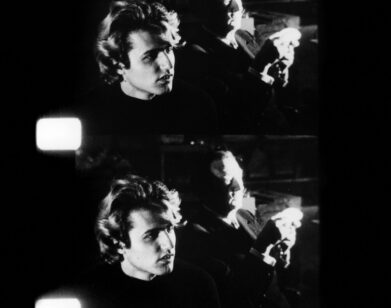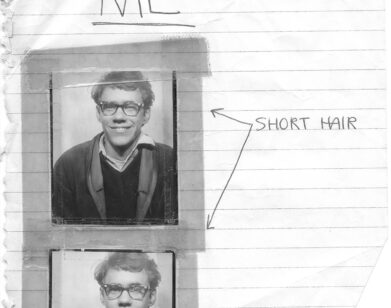Thirstory
Elsa Peretti Wasn’t Afraid to Play with Fire

Photograph by Alejandro Reino, Interview, November 1974.
You’re officially on the guest list for the “After Hours” edition of Thirstory, where we’ll escort you into the exclusive enclave of the Interview archive, starring the legendary fashion designer Halston and his inner circle of friends and conspirators. Here, sleep is a figment of the imagination, so mix yourself a nightcap as we unpack the gossip and glamour of the real-life luminaries who inspired Netflix’s new miniseries, Halston.
———
After years of playing mannequin as a “Halstonette,” Elsa Peretti’s hobby of jewelry-making took a turn when the pieces she designed for Halston and other brands grew a cult following. As Ricky Clifton, the renowned decorator and Peretti’s dear friend, told us, “[Her aesthetic] was a combination of emotion and a cerebral way of designing. It was interesting to see how her ideas grew from something that most people wouldn’t even notice.” An early champion of her work, Halston set up a meeting for Peretti with Tiffany & Co. that resulted in a lucrative deal for his former muse.
At first, many on the frontlines of the friendship said there was mutual excitement about Peretti’s newfound fame outside of Halston’s shadow. For Interview’s November 1974 issue, Halston’s boy toy Victor Hugo pressed Peretti on her growing popularity, asking, “How do you feel about all your success at Tiffany’s? Richard Bernstein told me he asked one of the salegirls how she felt about it and she said she didn’t even have time for a coffee break,” to which Peretti answered, “I prefer tea.”

Photograph by Helmut Newton, Interview, November 1976; Photograph by Robin Platzer, Interview, Jan 1976.

Photograph by Alejandro Reino, Interview, November 1974.
In another account, Sandy Linter, the legendary makeup artist, worked on a photoshoot starring Halston, Peretti, and a model at the designer’s infamous townhouse for Vogue in 1974. As Linter recalls, the jewelry designer made sure Halston and the model looked their very best: “Elsa was just running around trying to get everyone looking good. She was never concerned about herself.” The makeup artist also recounted how gracious and kind Peretti was after she discovered Linter had taken it upon herself to detangle a million-dollar web of Diamond by the Yard necklaces that a negligent stylist left tangled on the floor.
By the late 1970s, if Halston and Peretti—portrayed by the actress Rebecca Dayan in the new Netflix miniseries about the designer’s life—weren’t already high off their own achievements, cocaine use would take them to new levels. The powdery stimulant was par for the course in the era, but the friends’ mutual love for partying grew dark. Somewhere down the white line, a squabble erupted. As Bob Collacello writes in Holy Terror, “It’s hard to say exactly why Elsa and Halston fell out in 1978, after so many years of being the closest friends and creative collaborators. He sometimes said that he launched her as a jewelry designer, which was true, and that she dropped him now that her Tiffany line was such a huge hit…”

Ewan McGregor as Halston and Rebecca Dayan as Elsa Peretti in Halston. Courtesy of Netflix.

Rebecca Dayan as Elsa Peretti in Halston. Courtesy of Netflix.
According to Clifton, the artist Christopher Makos, and Halston’s former florist, Peter Wise, there was something deeper going on. All three are quick to point out an incident involving a “fire” that was a major catalyst in the Halston and Peretti’s turbulent relationship. In his photo book Andy Warhol’s Exposures, Warhol describes an evening at Halston’s home where all the women in his life were present, writing, “The only one that’s not there now is Elsa Peretti. She had a fight with Halston one night and threw the sable coat Halston gave her for Christmas into the fireplace. That was the chicest night,” he adds cheekily.
As Wise implies, Peretti had a combustible temperament that was counterbalanced with an irresistible charm—even to Halston, who continued to kiss and make up with her as the years went on. Another redeeming quality was her voice. “Her accent was unbelievably thick and luxurious,” Makos said. “Have you ever had an Italian meal that wasn’t luxurious? It’s luscious, it’s delicious. It’s got all the flavors of life in it. Her voice was like that.” That soothing voice, as Clifton reflects, was a vehicle for support and generosity. As she was for Halston, Peretti was an early proponent of Clifton’s—sending him to school in Japan and taking him to Europe, where she showed him the world. In a sweet reflection, Clifton said, “[Peretti] said we were like an amoeba, the two of us. That’s just like the most romantic thing anybody’s ever said.”








